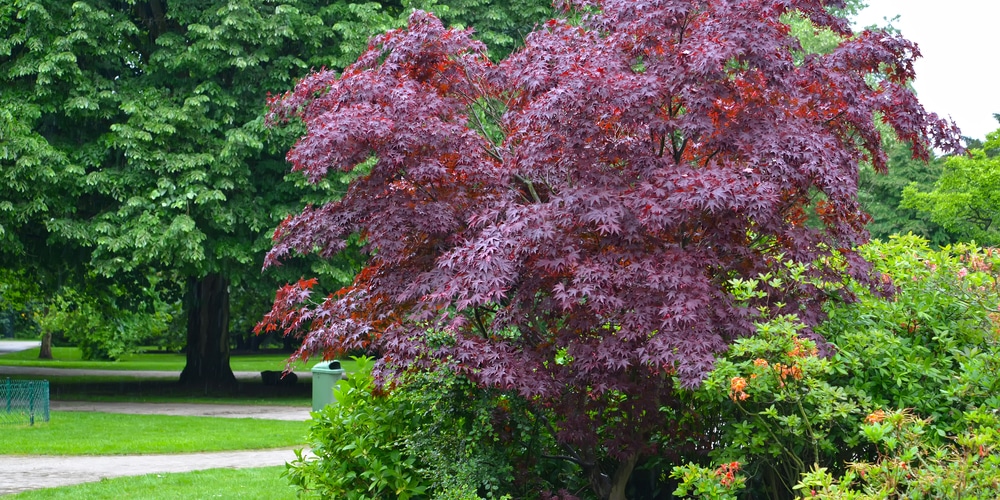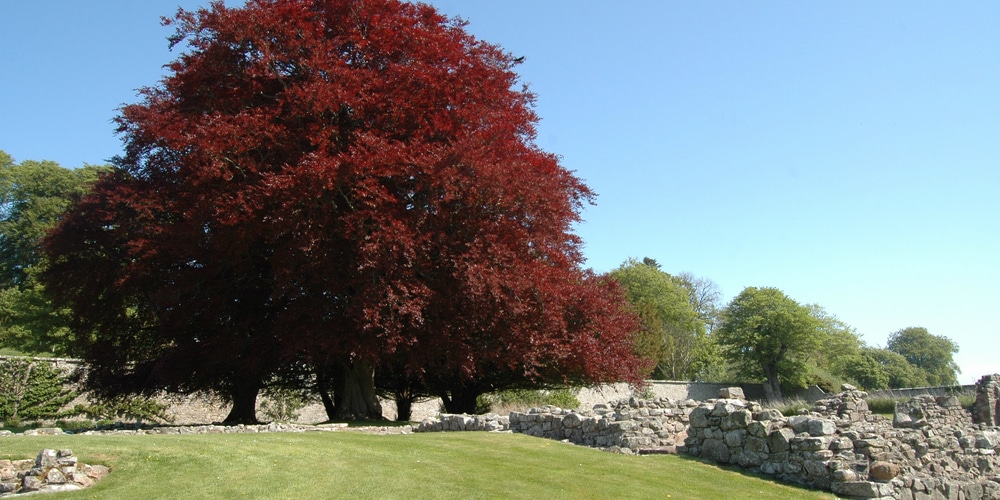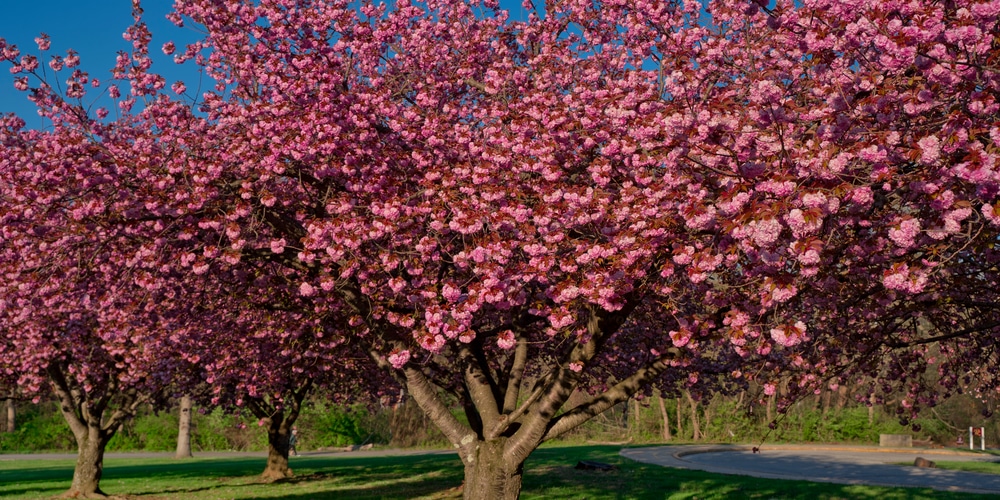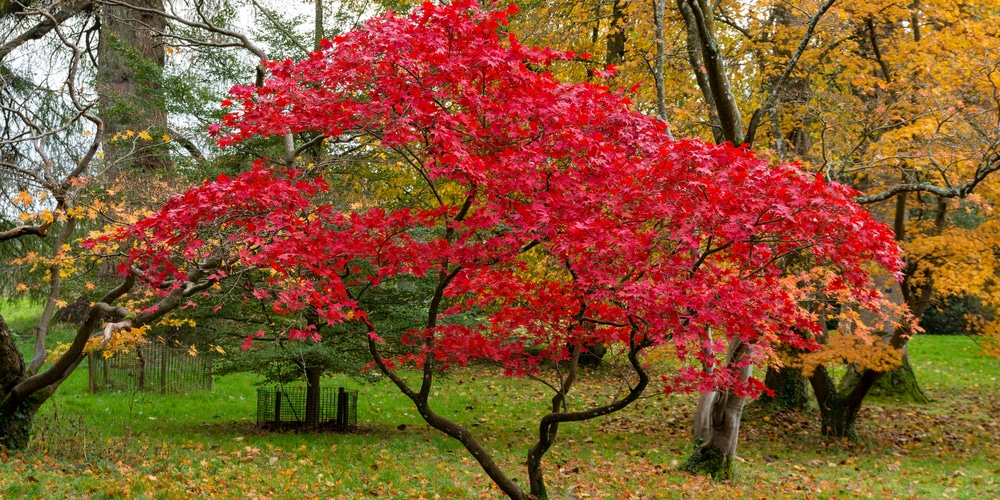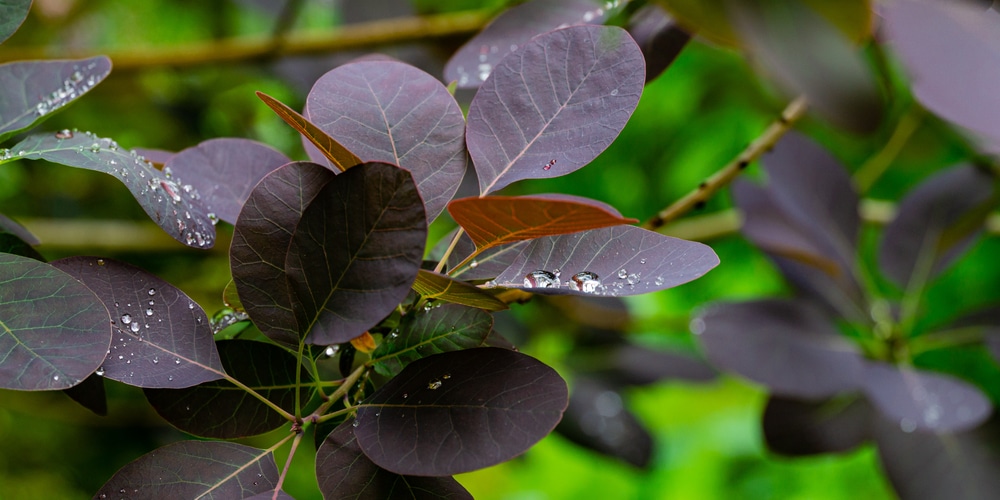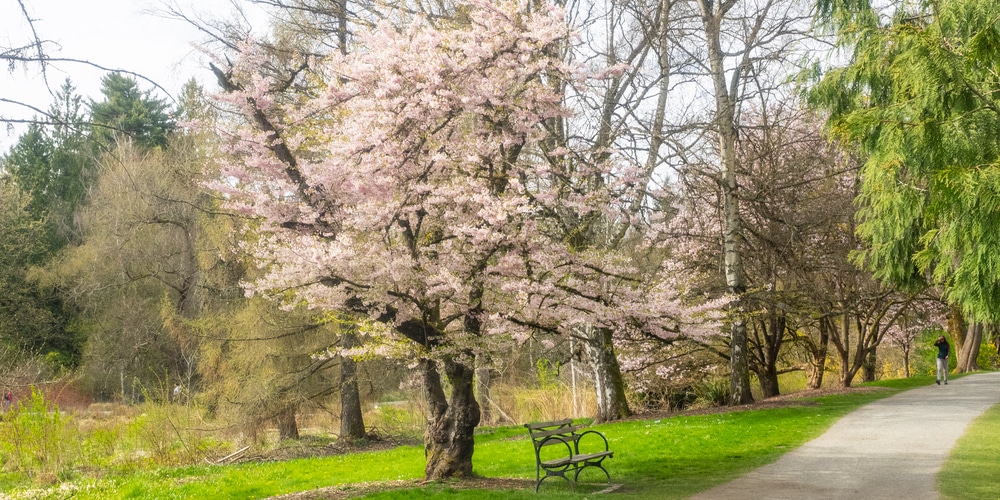Many trees have leaves that turn red in the fall. These often look stunning as the landscape turns from green to shades of red, orange, and yellow. The leaves of deciduous trees turn red or orange in the fall, while evergreens remain green year-round. Did you know that some tree species have red leaves all year?
If you’re looking to create a Japanese garden, you may like to plant the Japanese maple, which has attractive red leaves all year. Alternatively, you may choose species such as the crimson king maple or the copper beach, which will add a hit of color to your yard or landscaping project.
If you’re looking to add fall colors to your yard all year round, check out some of these lovely species of trees with red leaves.
Trees with Red Leaves All Year Round
Here are the top seven trees with red leaves all year round. They look stunning and will add some color to your yard or landscape throughout the year. Many of these trees flower during the spring, and some will even provide fruit in the summer months:
Crimson King Maple
The Crimson King maple has an attractive reddish-purple foliage throughout the year. This tree species is large and can grow between thirty-five and fifty feet at maturity. It can also get up to thirty feet wide if conditions allow. These trees are very adaptable and can withstand extremes of temperature. They thrive on the city streets or in a rural location.
The Crimson King Maple will adapt to various types of soils, can tolerate heat, cold, shade, and even drought. These trees not only have lovely leaves but also blooms with maroon and yellow flowers throughout the spring.
Copper Beech
The copper beech is sometimes referred to as the purple beech due to its reddish-purple leaves. These trees have been cultivated using the common beech and are common in the UK and other areas of Europe. They grow in both urban and rural locations.
The trees have lovely smooth bark, which is grey in color and has horizontal markings. The foliage grows in a criss-cross pattern, and the leaves are long and thin like a tornado.
Copper beech trees thrive in soil that’s fertile and provides the nutrients they need. These trees like calcified soil that’s slightly acidic. They do best in humid climates and require well-drained soil.
Red Silver Flowering Crabapple
Red Silver Flowering Crabapple trees have large canopies and are semi-weeping trees that have red leaves. They come from the Rosaceae tree family and have dense foliage and oval-shaped leave. These trees are medium-sized and generally grow to be up to 25 feet tall. They can be between ten and twenty feet wide at maturity.
Red Silver Flowering Crabapples have red flowers during the spring. They also produce fruit during the summer months, which can be used to make jelly. These trees thrive in soils containing peat and do well in clay-like soils that are highly acidic. They should be planted in the partial shade.
Japanese Maple
The Japanese Maple is also known as a ‘Beni-Maiko’ tree which translates as “Red-Haired Dancing Girl.” This tree is beautiful and highly sought after. It’s commonly used in Japanese landscapes. The leaves have between three to five lobes and look similar to a traditional maple leaf.
The Japanese maple tree is petite, growing to between four and six feet tall. It can be easily grown in your yard or in a container. These trees are easy to care for as they are low-maintenance and can adapt to various conditions, and grow in various soil types. To achieve beautifully vibrant foliage, you should plant your Japanese maple in the full sun.
Cotinus smoke tree
The Cotinus smoke trees have round shapes leaves, which are a rich red, sometimes purple in color. This is a hybrid tree species that has been created using the Cotinus coggygria and an American smoke tree.
The trees foliage does change slightly with the seasons. The leaves will look light red in the spring, and they will gradually get darker, becoming a deep red in the summer. The tree’s leaves will change color in fall and will be red, orange, and yellow.
Prunus serrulata
Prunus serrulate is another lovely tree that has red leaves year-round. This tree is commonly referred to as the ‘Royal Burgundy.’ It’s a vase-shaped deciduous tree that flowers during the spring and belongs to the Rosaceae family.
These trees can grow up to twenty feet tall and have a canopy that spreads fifteen feet at maturity. The Royal Burgundy Tree has reddish foliage with a purple tinge. These trees’ flowers are also red and slightly darker than the leaves.
The Prunus serrulata thrives in well-drained soil and likes to be positioned in the full sun. You should ensure that your tree is regularly watered if it’s to thrive.
Acer palmatum dissectum
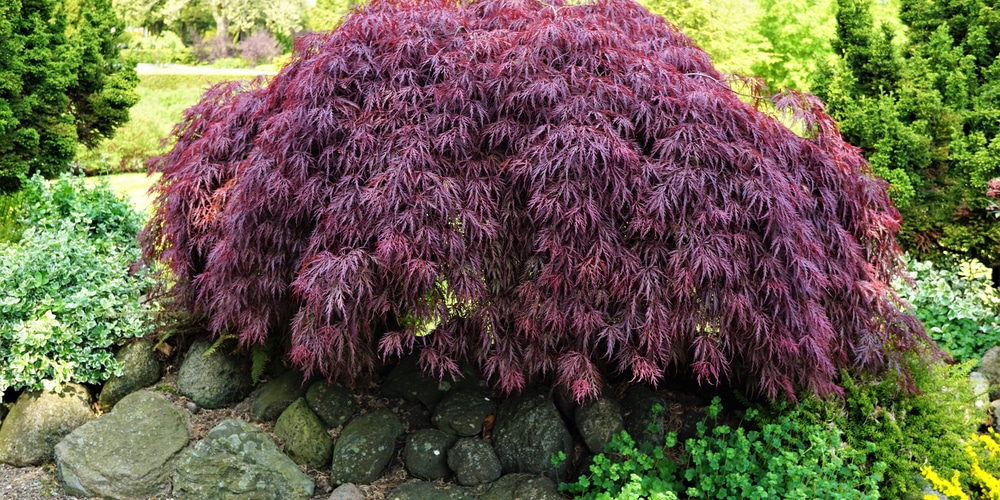
The Acer Palmatum Dissectum is another Japanese Maple tree which is known as the Crimson Queen. This popular species is very unique and has a lovely leaf color. It’s often used in ornamental landscapes due to its color and size. This tree is fairly small and grows up to ten feet at maturity. It has a wide canopy that’s between ten and twelve feet. This makes the tree perfect for smaller yards and tight spaces.
The crimson Queen thrives in soil that’s rich and slightly acidic. You should keep your trees moist if they are to flower and stay in good health. This tree can be grown in varying lighting conditions, including full sun or partial shade.
Conclusion
As you can see, there are many stunning trees that have red or purplish leaves. These trees will make a great addition to any yard, especially if you plan to create a Japanese landscape. Some red leaves will also look great against the rest of your green trees and shrubs as they will create a lovely contrast.
Make sure that any tree you plant is ok for the climate that you live in. A tree can freeze to death, particularly if it is growing outside of it’s growing in a climate colder than where it would grow natively.
